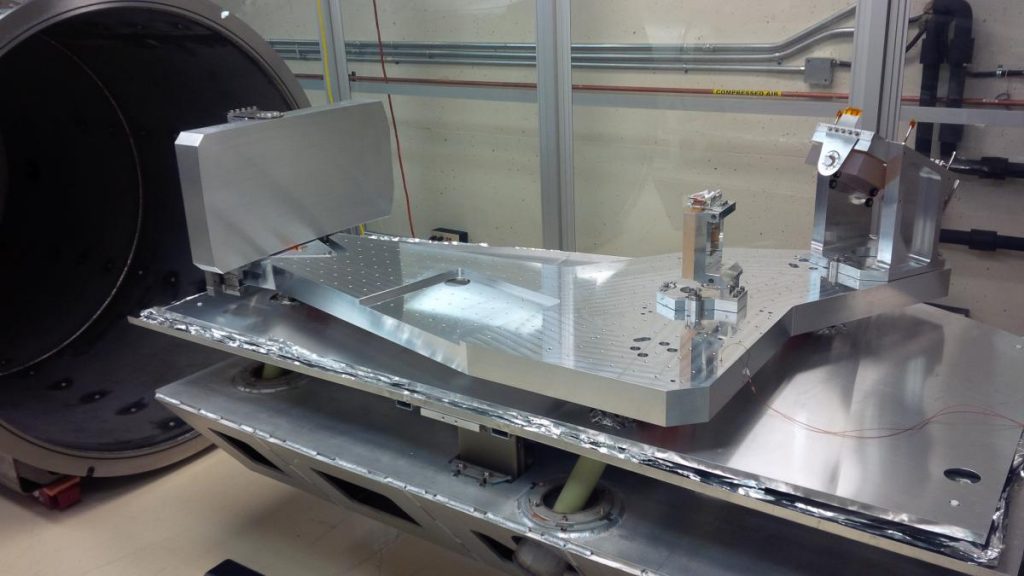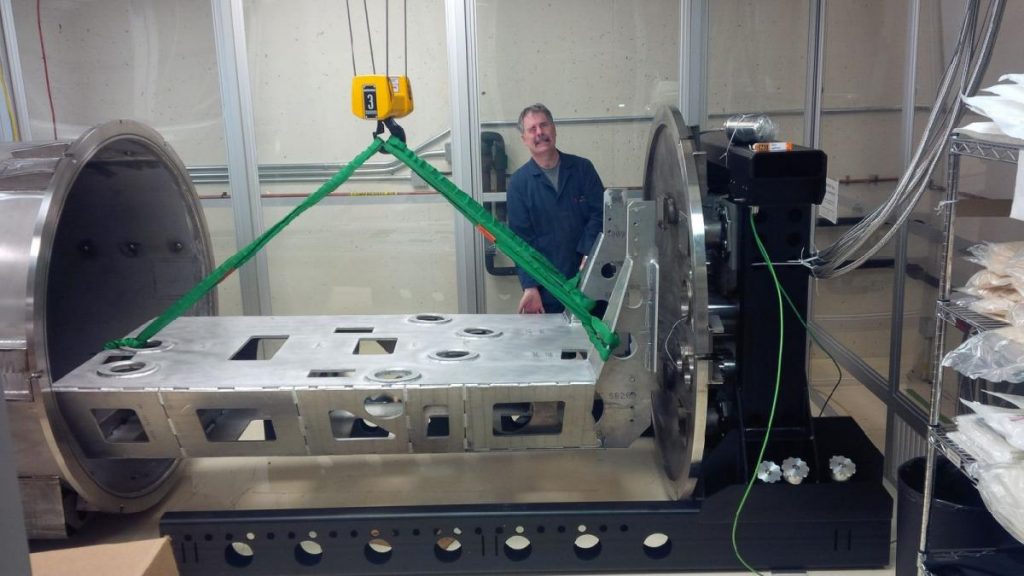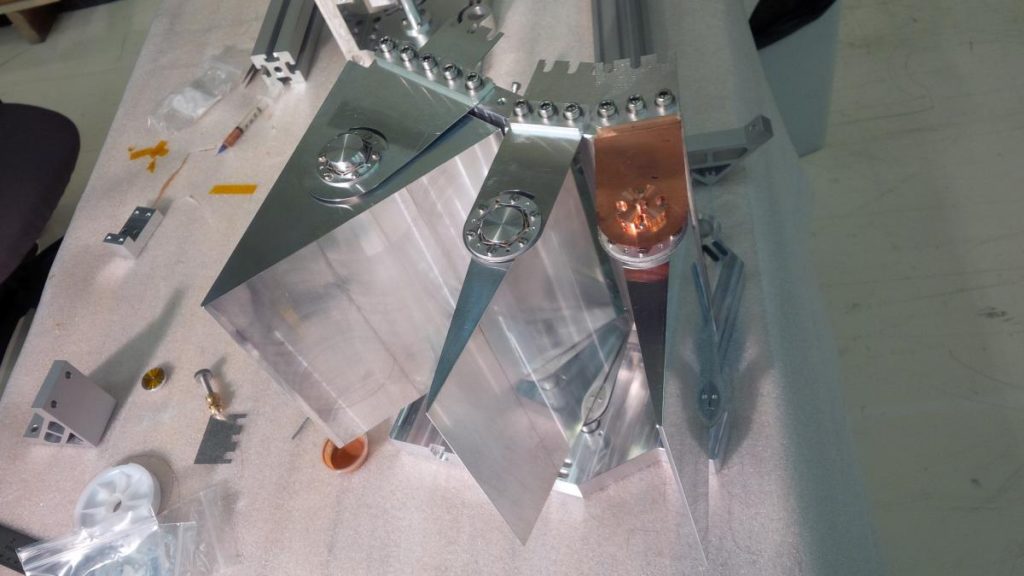2016 March: Integration of the spectrograph cryomechanics at NRC-H
The spectrograph cryomechanics is being assembled and tested at NRC-H prior to delivery at IRAP-OMP
The spectrograph cryomechanics is currently being integrated and tested at NRC-H in Victoria. The internal support frame was mounted within the cryogenic vessel, and the optical bench was installed on the cold plate and cold bus thanks to which the spectrograph can be cooled down to 80K. The cold plate supporting the bench rests on six tubular legs with Universal Joints, preventing any stresses from the support system to be transmitted to the optical bench.



The mounts of the various spectrograph optical components (parabola, grating, prisms, folding flat, slicer) are also integrated, presently holding dummy optics, allowing the team to achieve cool-down tests and to assess overall performances in realistic conditions, especially regarding thermal stability. Members of the IRAP / OMP team (Driss Kouach, Zalpha Challita) are currently visiting NRC-H to prepare for the final acceptance tests to be carried out in 2016 May, during which the cryomechanics performances will be validated with the true optical components.
Following delivery by NRC-H in June 2016, the whole cryogenic spectrograph will be reassembled in the P2IS clean room of IRAP / OMP. After repeating all cryogenic validation tests to further check that everything behaves nominally, the optical alignement of the spectrograph will begin in 2016 Q3, leading to the first measurements of the spectrograph image quality.



